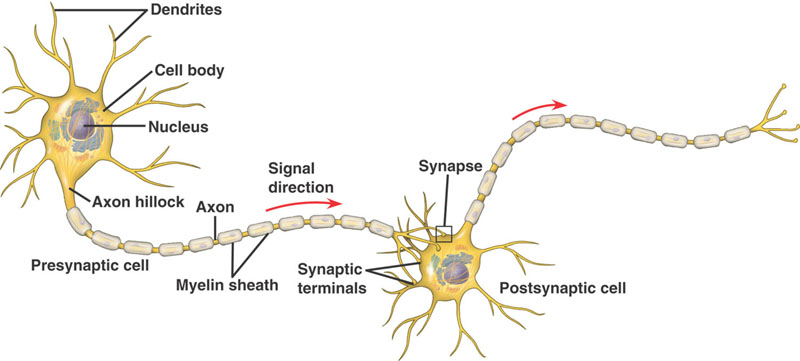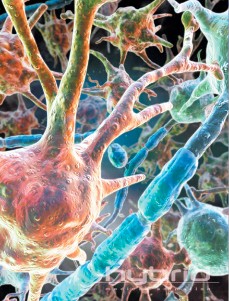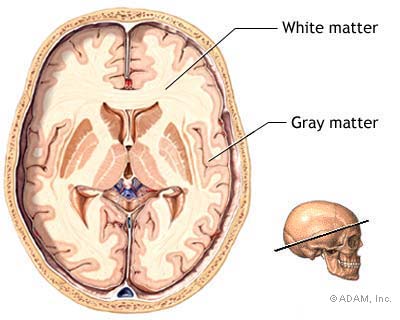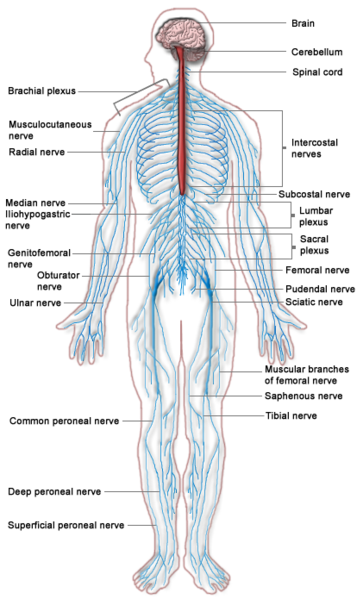Neurons: Neurons (nerve cells) are made up of a soma, dendrites, axons, and a myelin sheath. The dendrites conduct impulses towards the soma, whereas the axons conduct impulses away from the soma. The myelin sheath allows the neuron to rapidly pass on nerve impulses. When neurons are connected, a synapse forms in which the axon of one neuron is almost connected to the dendrite of another neuron with a gap in between them. As the signal reaches the synapse, neurotransmitters are released to transfer the signal over to the dendrite of the receiving neuron ("Human Physiology"). More about the neurons and their synapses are discussed in the video below. There are three main types of neurons:
 |
 Nerve Tissue: The nerve tissue is a connection of nerve and neuroglial cells. Neuroglial cells support the neurons, allowing them to maintain their signaling ability. They help define synaptic contacts, but they do not directly participate in synapses and electric signaling. Unlike neurons, they lack axons and dendrites. There are three main types of neuroglial cells in the CNS: astrocytes, oligodendrocytes, and microglial cells. ("Neuroglial Cells")  Other Parts of the Nervous System:
|
|
Nervous System: The nervous system is comprised of a system of various neurons and is divided into two parts: Central Nervous System (CNS): -Includes: brain and spinal cord -Functions: movement, thought, speech, memory, analytical thinking, and coordinating the actions of the body ("Central Nervous System Function") Peripheral Nervous System (PNS): -Includes: nerves outside of the CNS that connect the CNS with the rest of the body -Functions: connects the brain to the rest of the body and carries the messages back and forth between the organs
|
||
